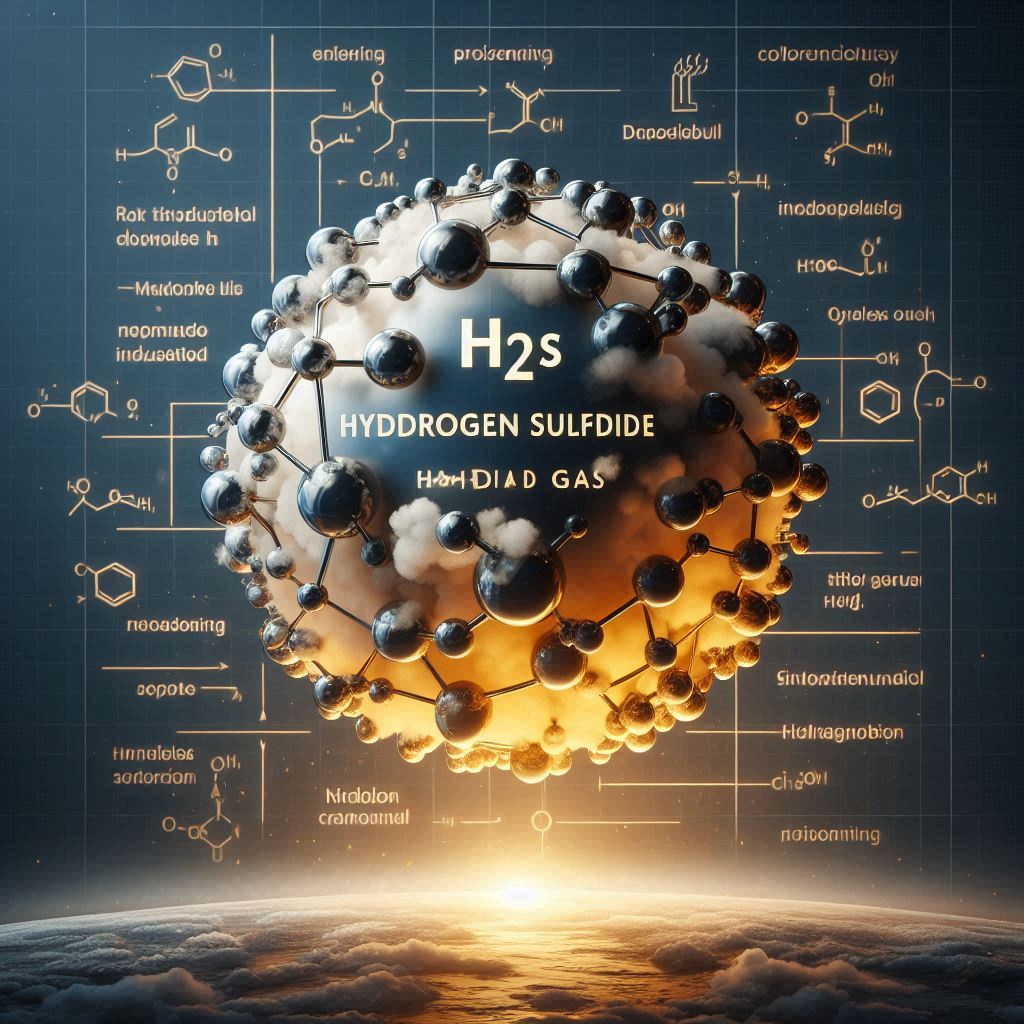
Hydrogen sulfide formula gas smell poisoning
Introduction
Hydrogen sulfide (H2S) is a hazardous gas that plays a significant role in various industrial processes. This colorless gas, often associated with a rotten egg smell, is produced in both natural and industrial settings. Despite its unpleasant odor, hydrogen sulfide has important uses in industries such as petrochemicals and pharmaceuticals. However, its toxic properties make it a dangerous substance that requires stringent safety measures. In this article, we will discuss the chemical formula, uses, risks, and safety protocols associated with hydrogen sulfide and its relation to sulfur compounds.
Hydrogen Sulfide Formula
Hydrogen sulfide, with the chemical formula H2S, consists of one sulfur atom bonded to two hydrogen atoms. It is commonly found in environments where organic matter is decomposing, such as swamps, sewage systems, and marshes. The sulfur component in hydrogen sulfide is responsible for its potent odor, which is often compared to that of rotten eggs.
This gas is produced during several industrial processes, such as petroleum refining, natural gas production, and wastewater treatment. While it’s vital in the creation of sulfur and metal sulfides, which are used in manufacturing fertilizers and chemicals, hydrogen sulfide also poses serious health hazards. It is highly toxic, even at low concentrations, and requires careful handling in industrial settings.
Hydrogen Sulfide Gas Smell
One of the most distinct characteristics of hydrogen sulfide is its strong, unpleasant smell. The scent, often compared to rotten eggs, comes from the sulfur compounds in the gas. Hydrogen sulfide can be detected by the human nose even at very low concentrations, as low as 0.5 parts per billion (ppb). This makes it a useful warning sign for potential dangers.
However, while the smell serves as an alert to the presence of hydrogen sulfide, relying on scent alone is not enough to ensure safety. At higher concentrations, hydrogen sulfide can overpower the sense of smell, making it impossible for individuals to detect its presence without proper equipment. This highlights the importance of using gas detectors and taking adequate safety measures in environments where hydrogen sulfide is present.
Hydrogen Sulfide Poisoning
Hydrogen sulfide poisoning is a serious concern, particularly in industrial environments. When inhaled, hydrogen sulfide enters the bloodstream through the lungs and can quickly interfere with cellular respiration by inhibiting the enzyme cytochrome oxidase. This disruption prevents cells from using oxygen effectively, leading to tissue damage, organ failure, and even death in extreme cases.
Symptoms of hydrogen sulfide poisoning vary depending on the concentration and duration of exposure. At low levels, individuals may experience headaches, nausea, dizziness, and irritation of the eyes and throat. Higher concentrations can cause more severe effects, including respiratory distress, loss of consciousness, and seizures. In extreme cases, exposure to hydrogen sulfide can be fatal.
To avoid hydrogen sulfide poisoning, safety measures must be implemented in workplaces where this gas is present. This includes providing adequate ventilation, wearing personal protective equipment (PPE), and using gas detection systems to monitor hydrogen sulfide levels.
Hydrogen Sulfide Gas and Sulfur
Hydrogen sulfide is directly linked to sulfur, an element found in abundance in both natural and industrial processes. Sulfur plays a vital role in hydrogen sulfide production, as this gas is a major sulfur compound. Sulfur is a key ingredient in the manufacturing of fertilizers, chemicals, and even medicines, and hydrogen sulfide is integral to the creation of elemental sulfur and metal sulfides used in various industries.
While sulfur compounds like hydrogen sulfide are essential in industrial applications, their hazardous nature demands caution. Sulfur’s connection to hydrogen sulfide underscores the need for careful handling and safety protocols to prevent poisoning and exposure. Research is ongoing to explore the potential therapeutic applications of hydrogen sulfide, which has shown promise in regulating blood pressure, inflammation, and other physiological processes.
Hydrogen Sulfide Gas and Industrial Uses
Despite its toxicity, hydrogen sulfide is valuable in several industries. In petrochemical manufacturing, hydrogen sulfide is used to produce elemental sulfur, which is then used to make sulfuric acid and other important chemicals. This makes hydrogen sulfide an essential compound in the production of fertilizers, detergents, and pharmaceuticals.
In the metal industry, hydrogen sulfide is used to produce metal sulfides, which are important in the electronics, cosmetics, and textile industries. The versatility of hydrogen sulfide in these industrial processes highlights its significant role in the economy, despite the precautions necessary to mitigate its toxic effects.
Conclusion
Hydrogen sulfide (H2S) is a potent, sulfur-containing gas that is both an industrial resource and a hazardous substance. Its distinct "rotten egg" smell serves as an early warning of its presence, but due to its toxicity, safety measures must be in place to prevent exposure. Whether in the sulfur, petrochemical, or pharmaceutical industries, hydrogen sulfide plays a crucial role in producing valuable chemicals. However, its toxicity reminds us of the importance of safety protocols to safeguard workers and the environment. Understanding hydrogen sulfide's connection to sulfur, its industrial uses, and its potential health risks ensures that we can benefit from its applications while minimizing harm.

